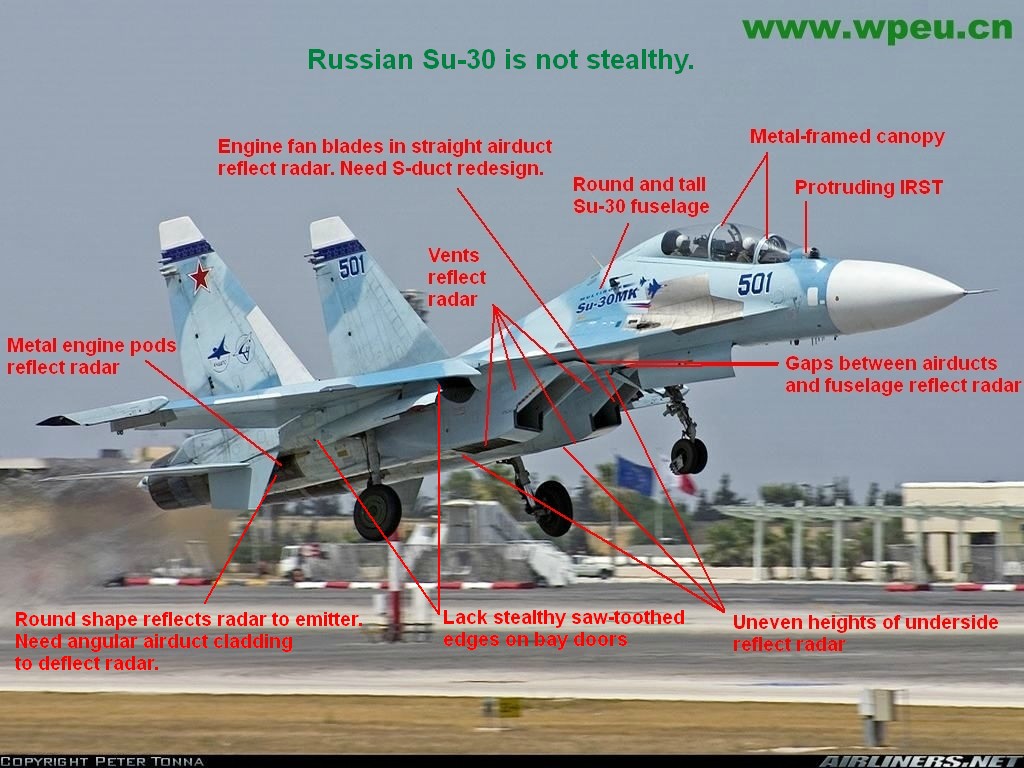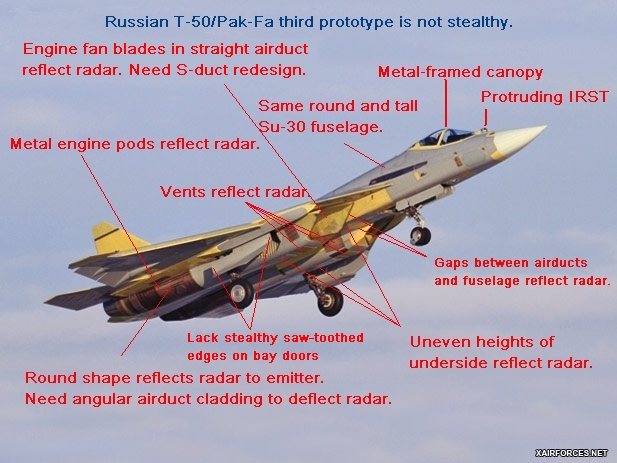Pre-production T-50 and initial production batches of the Su-57 will use interim engines, a pair of NPO Saturn izdeliye 117,[N 2] or AL-41F1.[92] Closely related to the Saturn 117S engine used by the Su-35S, the 117 engine is a highly improved and uprated variant of the AL-31 that powers the Su-27 family of aircraft. The 117 engine produces 93.1 kN (21,000 lbf) of dry thrust, 147.1 kN (33,067 lbf) of thrust in afterburner, and has a thrust to weight ratio of 10.5:1.[93] The engines have full authority digital engine control (FADEC) and are integrated into the flight control system to facilitate maneuverability and handling.[82][
من اين تاتي بهذا الكلام ؟؟؟
The AL-41F1 engine allows the PAK FA to fly over ranges of 3,500 kilometers, 1.5-1.6 Mach supercruise and an operational ceiling of 20,000 meters. .
The two 117 engines incorporate thrust vectoring (TVC) nozzles whose rotational axes are each canted at an angle, similar to the nozzle arrangement of the Su-35S. This configuration allows the aircraft to produce thrust vectoring moments about all three rotational axes, pitch, yaw and roll. Thrust vectoring nozzles themselves operate in only one plane; the canting allows the aircraft to produce both roll and yaw by vectoring each engine nozzle differently. The engine inlet incorporates variable intake ramps for increased supersonic efficiency and retractable mesh screens to prevent foreign object debris being ingested that would cause engine damage.[82] The 117 engine is to also incorporate infrared and RCS reduction measures.[94][95] In 2014, the Indian Air Force openly expressed concerns over the reliability and performance of the 117 engines; during the 2011 Moscow Air Show, a T-50 suffered a compressor stall that forced the aircraft to abort takeoff.[96]
Production fighters from 2020 onward will be equipped with a more powerful engine known as the izdeliye 30,[N 2] Compared to the 117, the new powerplant will have increased thrust, lower costs, better fuel efficiency, and fewer moving parts. Those features, along with subsequently improved reliability and lower maintenance costs will improve the aircraft performance and reliability.[93][97] The izdeliye 30 is designed to be 30% lower specific weight than its 117 predecessor. The new engine is estimated to produce approximately 107 kN (24,054 lbf) of dry thrust and 176 kN (39,556 lbf) in afterburner.[98] Full scale development began in 2011 and the engine's compressor began bench testing in December 2014.[98] The first test engines are planned to be completed in 2016, and flight testing is projected to begin in 2017. According to Russian Deputy Minister of Defence Yuriy Borisov flight testing with new izdeliye 30 engines will begin at Q4-2017.[99][100][101] The new powerplant is designed to be a drop-in replacement for the 117 with minimal changes to the airframe.[102]
On 5 December 2017, the first flight of the second Su-57 prototype (fuselage number 052) fitted with the izdeliye 30 engine took place at the Gromov Flight Research Institute. The 17–minute test flight was carried out by Sergei Bogdan, Sukhoi chief test pilot.[103] The izdeliye 30 engine was installed on the port-side engine position while the izdeliye 117 engine remained on the starboard side. The izdeliye 30 features a new serrated nozzle that's slightly shorter but has larger diameter than the izdeliye 117 nozzle.[73]






